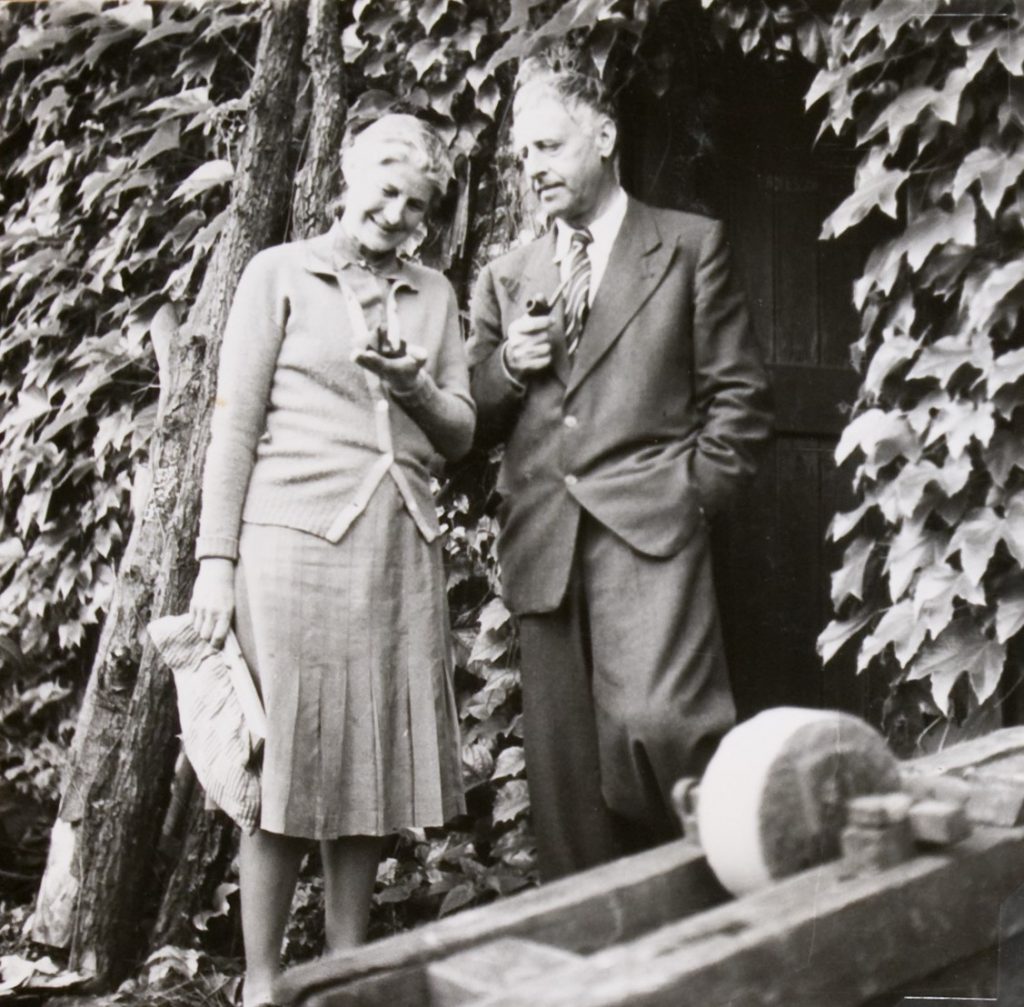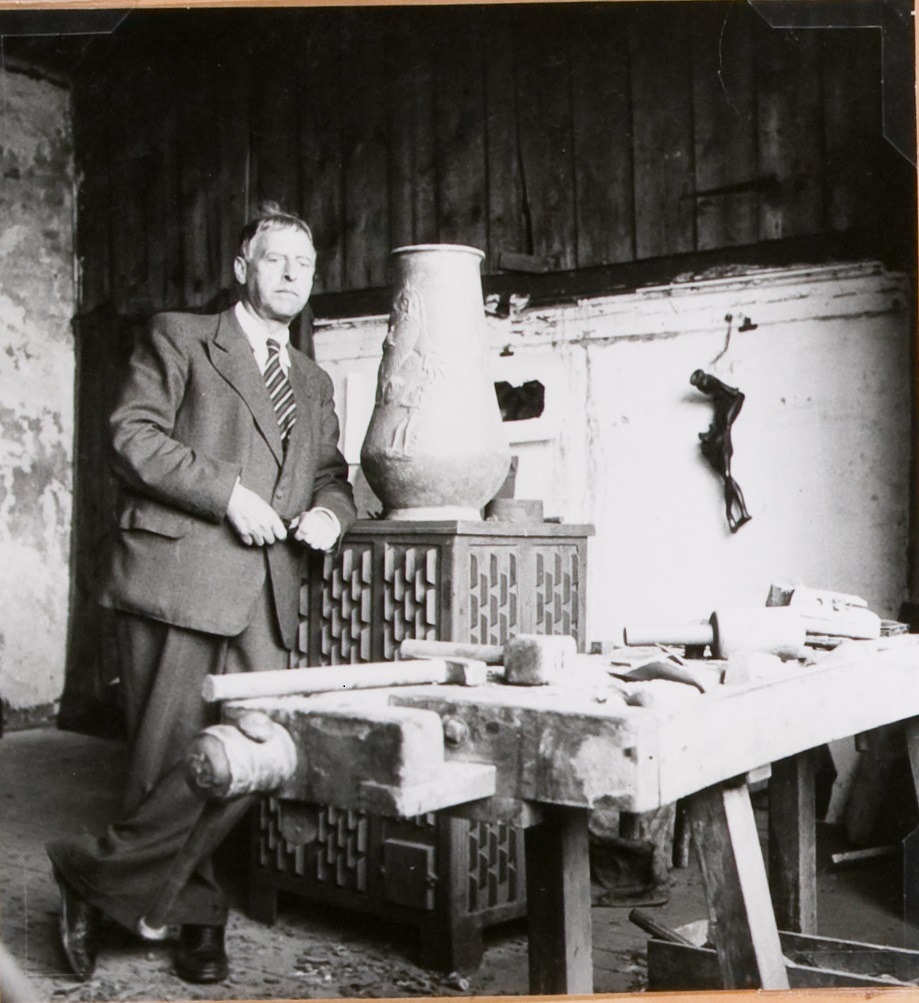Ever wonder what types of materials are requested from the Fontaine Archive and where they may be used? This week we received a request for images of artist Ewald Mataré (1887-1965) from the director of the Germany’s Museum Kurhaus Kleve, which owns the representative collection of Mataré works. Continue reading to learn more about Mataré’s work, teaching style, surviving Nazi Germany, and his intersections with the Fontaine’s life.
Guido de Werd is a Dutch art historian and authority on the graphic artist and sculptor Ewald Mataré (1887-1965). De Werd is the director of museum Kurhaus Kleve which owns the representative collection of Mataré s works, as gifted by his daughter, Sonja Mataré. De Werd asked for images of the sculptor and family members he discovered browsing the archive’s new website. Virginia Fontaine had visited and photographed Ewald many times, beginning as early as 1947, and purchased four sculptures and several lithographs herself.
During the rebuilding of the heavily bombed Cologne cathedral, the city commissioned him to create a set of doors. Yet, his many stylized bronze cows, small enough to fit into the hand, are a signature work that Virginia adored. In the 1930s, the Nazis had labeled him as ‘degenerate’ and forbade him to work. They nearly destroyed his large sculpture the city commissioned to commemorate the surviving WWI soldiers entitled “Dead Warrior” standing in front of the Kurhaus. It now stands, renovated, in front of the Klever Stiftskirch (church).

Mataré was also known for an innovative art teaching technique for which students such as Joseph Beuys (1921-1986) paid homage. Mataré, while strict in requiring fundamental drawing practice, would encourage individualism and include the students in his commissions. Mataré fostered a sense of community; for instance, the same group of students worked together throughout their art education. Virginia recognized his generous efforts and enjoyed his good nature. Very few other artists received such consistent attention from her. (For more on Mataré’s curriculum for the Düsseldorf Academy, see https://www.withbeuys.co.uk/education)
